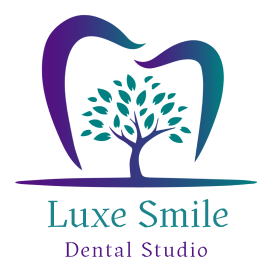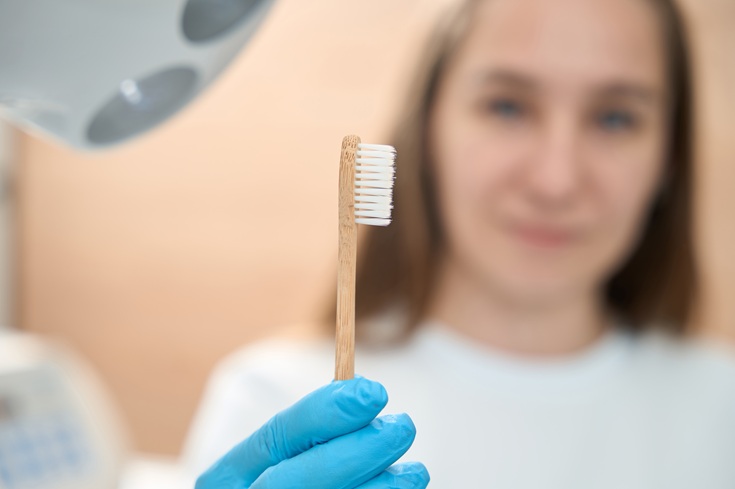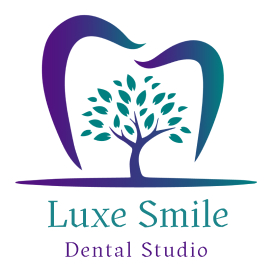Can Using Old Toothbrushes Cause Toothache?


That nagging pain in your tooth didn’t result from biting down on something cold or missing your evening brushing. Hard to believe, but that pain may be lurking in plain sight—on your bathroom counter with worn-out bristles and a faded hue.
Yes, you might be experiencing toothache from that trusty old toothbrush. It’s all too easy to cling to a toothbrush for longer than you ought. Perhaps it seems “fine,” or perhaps you just forgot the last time you got a new one. But that frayed brush might be causing more damage than a sugar-laden diet. Let’s discover how something so straightforward might trigger a chain of dental health issues.
How Old Toothbrushes Cease to Perform Their Best?
Your toothbrush is not merely a device; it’s your first line of defense against plaque, bacteria, and food particles. But after a while, its bristles weaken, curve, and fail.
This is what occurs when your toothbrush has outlived its usefulness:
- Torn bristles do not clean: Worn-out bristles can’t access tight spaces or eliminate deposits from enamel and gum lines.
- Plaque remains untouched: Instead of brushing it away, your old brush glides over it.
- Bacterial contamination: Old toothbrushes become a breeding ground for bacteria, especially if they don’t dry properly between uses.
- Increased gum irritation: Bent bristles rub against your gums unevenly, potentially causing micro-tears or inflammation.
Combine these issues, and you’re giving plaque and bacteria a free pass—leading to decay, gingivitis, and yes, toothache pain.
From Bristles to Pain: The Surprising Domino Effect
It can begin innocently—sensitivity to sweet foods or tender chewing. But if allowed to go on unchecked, sloppy brushing due to a poor-performing toothbrush can send you to an emergency dentist.
Let’s follow the progression from mild tooth sensitivity to agonizing toothache from old toothbrush:
- Incomplete cleaning → Plaque buildup
- Plaque buildup → Acid released from bacteria
- Acid exposure → Enamel destruction
- Thinned enamel → Sensitivity and cavities
- Extensive decay → Toothache and potential infection
Your teeth don’t hurt for no reason. Frequently, the culprit is invisible buildup that’s been given a chance to grow. Brushing regularly isn’t enough unless your toothbrush is up to the task.
How Long Is Too Long to Keep a Toothbrush?
Dentists advise a change of toothbrush every three to four months to save you from toothache from old toothbrush. Other circumstances may cut short your toothbrush’s life:
- Illness: After a cold, flu, or sore throat, discard it. Germs persist.
- Visible wear: When the bristles lose their shape, they no longer clean properly.
- Kept in wet places: Water accelerates the growth of bacteria and softens the bristles.
- Brushing too hard: Rough brushing wears out bristles more quickly, diminishing their cleaning ability.
The reality is, if your toothbrush appears to be exhausted, it’s not merely cosmetic—it’s functional. And that functionality has a direct effect on your oral health.
Toothaches Caused by Neglecting Oral Care
Not all toothaches have cavities as their underlying cause. Some result from gum irritation, exposed roots, or trapped particles—all of which can be due to poor brushing. If your brush fails to get the job done, bacteria start irritating the gum and burrowing underneath the tissue.
This results in:
- Gum recession: This is due to inflammation or improper brushing angles.
- Root exposure: After gums recede, sensitivity increases with hot or cold food.
- Pockets of infection: Food gets trapped and leads to localized pain or swelling.
When your gums bleed during brushing or you find that one area always has a dull ache, it’s time to reconsider your brushing equipment—starting with the brush itself.
Toothbrush Hygiene: More Important Than You Think
A toothbrush’s hygiene doesn’t stop after rinsing. How and where you store it counts, too. Leaving it in a closed container or near a toilet increases contamination. And those germs? They move straight to your mouth with each brush.
Tips for a clean and germ-free toothbrush:
- Store it standing up, and allow it to air dry between uses. You should use a toothbrush holder for this purpose.
- Keep it far from the toilet
- Steer clear of toothbrush covers except when traveling; they retain moisture.
- Never share your brush, not even with a partner or child.
- Replace it right away after illness or oral infection.
Old, dirty brushes invite gum inflammation, bacterial overload, and pain. It’s not merely a matter of tooth cleanliness; it’s about maintaining your mouth’s ecosystem in balance.
Why You Should Routinely Replace Your Toothbrush?
Changing your toothbrush doesn’t just revitalize your routine—it safeguards your teeth from toothache from old toothbrush, stops oral infections, and enhances long-term results. You wouldn’t wear the same contact lenses for months. So, why let a dirty brush come into contact with your gums?
Combining a good toothbrush with the proper brushing technique is the foundation of prevention. But when the unexpected pain hits, it could mean more than just a cavity. That’s why emergency dental care exists.
Waiting could mean allowing a minor cavity to become something worse. Proper care at the right moment can halt pain from escalating—and maybe even save your tooth.
Ditch the Brush, Save the Tooth
Old toothbrushes don’t just clean less—they can contribute to the problems you’re trying to prevent. Toothaches, gum pain, and sensitivity often have silent beginnings, but they rarely fix themselves.
Replace your toothbrush periodically. Look for hints of poor cleansing. Don’t let something so insignificant as a brush interfere with your comfort level. And should that discomfort progress to sharp, ongoing pain, don’t wait—emergency dental care could be the next visit.
It’s a little change with significant value. Toothbrushes can look insignificant in daily life, yet in the context of dental hygiene, they contain the potential to safeguard—or upset.
Let’s make sure it’s the first one.


